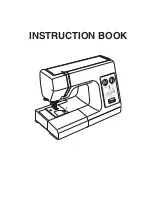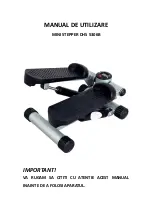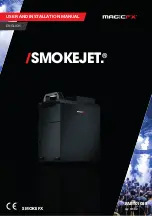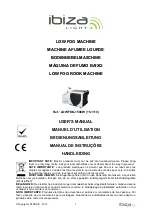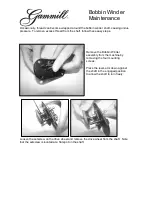
APPENDIX
297
7
The needle threader
cannot be used.
The needle is not at the correct
position.
Touch the key to move the desired
needle bar to be threaded into
embroidering position.
p.63
Recommended needles are not used on
this machine.
Replace and use recommended needle.
p.33, 86
The needle is not installed correctly.
Correctly install the needle.
p.33, 86
The hook on the automatic needle-
threading mechanism is bent.
Consult your nearest authorized
Brother dealer.
The thread tension is
incorrect.
The upper thread is not threaded
correctly.
Check the thread path, and then thread
the upper thread again.
p.57
The bobbin thread is not correctly
threaded.
Correctly thread the bobbin thread.
p.36
The lower thread tension is incorrect.
Adjust the tension of the bobbin thread.
p.124
Lint or dust has accumulated in the
thread tension disc.
Remove the tension dials, and then
remove any lint or dust accumulated
between the felt washers.
p.287
The upper thread
comes out of the
needle when
embroidering begins.
If a short length of thread remains after
the thread is trimmed, the needle may
become unthreaded when
embroidering begins again.
Set the remaining length of thread to
“Long Tail” on the second page of the
settings screen.
p.228
The upper thread does
not reach the bobbin
thread when
embroidering begins.
There is no more thread in the bobbin,
the thread does not feed from the
bobbin, or the thread that is fed from
the bobbin is too short.
Correctly thread the lower thread.
p.36
Although the thread is
not broken, a broken
thread error occurs
and the machine stops.
If the thread breakage sensor in the
thread tension disc of the thread
tension knobs cannot detect that the
thread is being fed, even if the machine
is running, a broken thread error occurs
and the machine is stopped. If the
thread came out of the thread tension
disc, even though the thread is not
broken, the machine detects that the
thread is not being fed and stops.
Clean the tension unit. Correctly pass
the thread through the thread tension
disc. If the broken thread error occurs
after the machine is cleaned and
rethreaded, the sensor may be
damaged. Consult your nearest
authorized Brother dealer.
p.59, 287
The thread is worn.
Lint or dust has accumulated in the
thread tension disc.
Remove the tension dials, and then
remove any lint or dust accumulated
between the felt washers.
p.287
Jumpstitches are long.
Lint or dust has accumulated in the
thread tension disc.
Remove the tension dials, and then
remove any lint or dust accumulated
between the felt washers.
p.287
There are needle cuts
or holes in the
garment.
The needle is dull.
Replace the needle. Dull needles have
a difficult time passing through the
garment, causing fabrics to tear.
p.33, 86
The fabric is too delicate.
The simple penetration of the needle
could damage delicate fabrics. Use
stabilizer on top of fabric.
p.254
There is puckering in
the fabric.
The thread tension is too tight.
Adjust the tension according to the type
of fabric and thread being used.
Polyester thread will stretch during
sewing especially if the tensions are set
too high. After the stitching is complete,
the thread returns to its original
strength, causing puckers in the fabric.
p.125
The framing tension of the fabric is
incorrect.
Tightly frame non-stretchable, woven
fabrics. Loose framing will cause the
fabric to bunch up under the stitching.
Tautly frame soft knits using a stable
backing. Overstretching the garment
will cause it to look puckered when the
frame is removed.
p.253
The column stitches are too long.
Re-digitize the design with fill stitching
or with multiple rows of column
stitching.
Symptom
Probable Cause
Remedy
Reference Page































